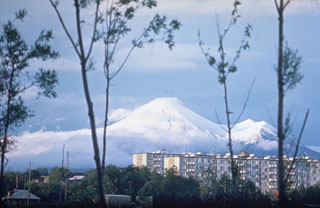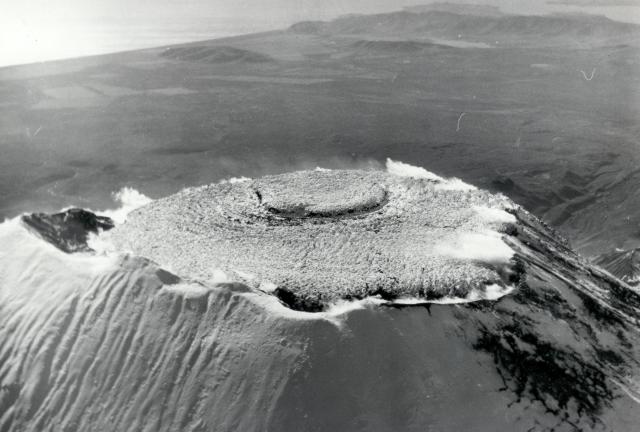Report on Avachinsky (Russia) — December 1991
Bulletin of the Global Volcanism Network, vol. 16, no. 12 (December 1991)
Managing Editor: Lindsay McClelland.
Avachinsky (Russia) Lava dome filled crater during January 1991 eruption
Please cite this report as:
Global Volcanism Program, 1991. Report on Avachinsky (Russia) (McClelland, L., ed.). Bulletin of the Global Volcanism Network, 16:12. Smithsonian Institution. https://doi.org/10.5479/si.GVP.BGVN199112-300100
Avachinsky
Russia
53.256°N, 158.836°E; summit elev. 2717 m
All times are local (unless otherwise noted)
The following supplements the preliminary report in 15:12. The eruption lasted until 30 January 1991, filling the summit crater (400-500 m in diameter) with ~21 x 106 metric tons of lava (figure 1). Circumferential and radial fissures 6 m deep covered the surface of the lava dome. Lava overflowed the S rim, feeding a flow that advanced 1.5 km down the SSE flank and short flows on the SW flank. Numerous fumaroles developed around the dome's margins.
Geological Summary. Avachinsky, one of Kamchatka's most active volcanoes, rises above Petropavlovsk, Kamchatka's largest city. It began to form during the middle or late Pleistocene, and is flanked to the SE by Kozelsky volcano, which has a large crater breached to the NE. A large collapse scarp open to the SW was created when a major debris avalanche about 30,000-40,000 years ago buried an area of about 500 km2 to the south, underlying the city of Petropavlovsk. Reconstruction of the volcano took place in two stages, the first of which began about 18,000 years before present (BP), and the second 7,000 years BP. Most eruptions have been explosive, with pyroclastic flows and hot lahars being directed primarily to the SW by the collapse scarp, although there have also been relatively short lava flows. The frequent historical eruptions have been similar in style and magnitude to previous Holocene eruptions.
Information Contacts: IVGG.


